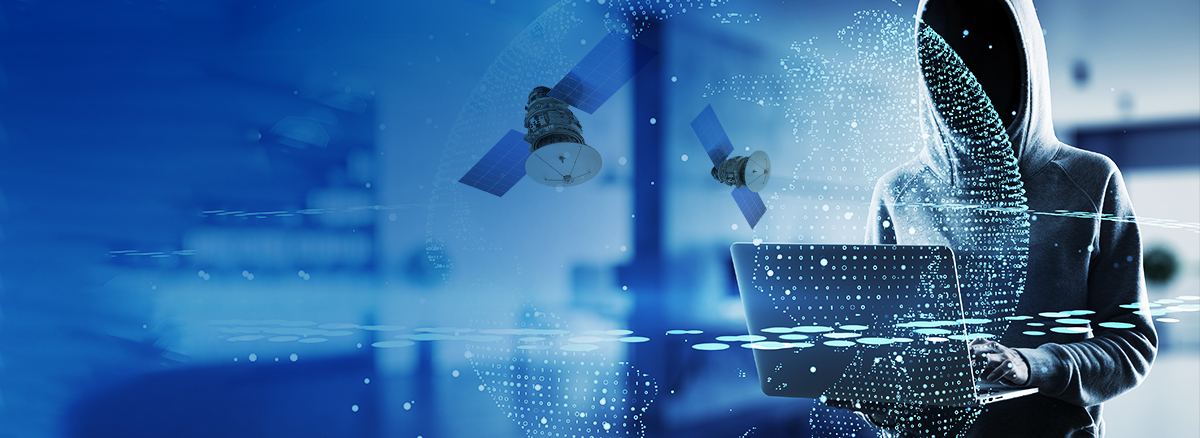Updated 12-14-2021
At Air Force and Space Force-hosted Hack-A-Sat event, we finished in the top 10% in a global field of nearly 700 participants
Ethical hacking seems almost oxymoronic. The two words have near-polar opposite meanings, yet the practice of ethical hacking is one of the most important priorities for government agencies seeking to protect themselves from cyberattacks.
Ethical hacking is, at a high level, an authorized attempt by a hacker to gain unauthorized access to a computer system, application, or data repository. Organizations enlist ethical hackers to find holes in their cybersecurity in order to plug them up and reduce vulnerabilities.
Cybersecurity is one of SAIC’s highest customer priorities. It’s why teams of SAIC employees frequently participate in hacking events and tournaments, often referred to as hackathons. And if the most recent hackathon proved anything, it was that SAIC has some of the best cybersecurity experts around.
Satellite security takes the long game
The satellite hackathon, called Hack-A-Sat 2, was cohosted in June by the U.S. Air Force and U.S. Space Force. The objective of the event was similar to a game of capture-the-flag — only it was played out over cybersecurity-based tests and challenges. Teams competed in a 30-hour race, with teams completing each challenge before unlocking the next challenge in multiple cybersecurity categories. Each completed challenge resulted in a retrieved flag.
“The first Hack-A-Sat was a tremendous success in bringing together a diverse group of government, commercial, and private organizations and individuals to test and develop cybersecurity solutions for our unique space networks,” said Lt. Gen. John F. Thompson, commander of the U.S. Space Force’s Space and Missile Systems Center, in a public statement.
This year, 697 teams from around the world competed to qualify for the competition’s final round, helping officials and competitors alike to understand what it takes to secure real satellites and ground control systems.
SAIC breaks into the top 10%
Team SAIC has participated in both years of Hack-A-Sat. This year, we moved up the rankings and into the top 10%, finishing 73rd overall out of 697 teams. This is a marked improvement from last year, when we finished 117th overall. The top eight teams will compete in the Hack-A-Sat 2 finals in December.
“The same skills put on display during Hack-A-Sat are baked into SAIC’s space and cyber solutions,” said Robert Morris, SAIC's cyberspace operations director. “Our teams are constantly investing in themselves to keep the company at the edge of cyber innovation and know-how, a vital need for all of our space customers.”
Our team of 12 competed in challenges that involved everything from satellite operations, to engineering, to reverse engineering, to radio frequency communications. Our improvement at the competition demonstrated that the talent of SAIC’s cybersecurity experts who support the nation’s various space missions is always getting better.
The SAIC team, dubbed the Skynet Assassins, was comprised of members from cybersecurity backgrounds, with a few developers, systems administrators, and those with knowledge of satellite systems. Team member Gabriel Penner, an SAIC cybersecurity analyst and network engineer, noted that Hack-A-Sat is different from other capture-the-flag (CTF) events.
“CTFs usually focus on web application hacking, reverse engineering malware or small programs, and looking for the bad guys on your network,” Penner said. “Hack-A-Sat also includes understanding how satellites are tracked in orbit and how they send and receive instructions from ground systems. You have to put together the software and hardware sides of things but in some cases also the physical location of a computer system that’s orbiting the planet.”
We'll be back
The system that Hack-A-Sat used was made-up, of course, but the cyber methods applied were from the real world. Penner said the event gave him and his fellow team members a look into “what makes a satellite tick” and that SAIC intends to participate in more Hack-A-Sats. We're proud to be part of events that inspire the world’s top cybersecurity talent to develop the skills necessary to help reduce space cybersecurity vulnerabilities and build more secure space systems.
Building upon the all-virtual competition, SAIC was honored to host all in-person participants in the Hack-A-Sat final event at the National Space Defense Lab in El Segundo, California, on Dec. 11. Eight finalist teams from around the world competed in a "capture-the-flag" cybersecurity event, performing skillful tactics to defend and sustain the functionality of their satellite systems while attacking those of other contestants.
SAIC, along with members of the U.S. Space Force and Air Force, witnessed first-hand how to navigate and assess satellite cybersecurity vulnerabilities. This opportunity of having front-row seats at the future of space innovation was truly invaluable.
